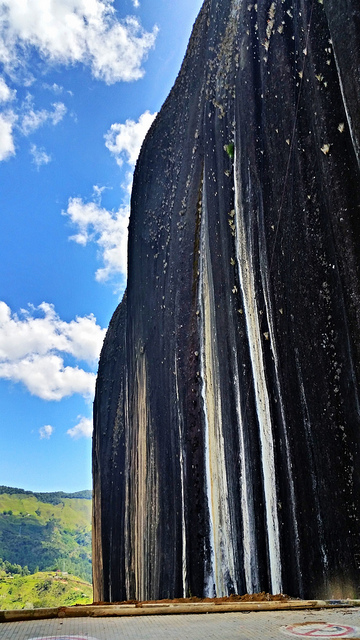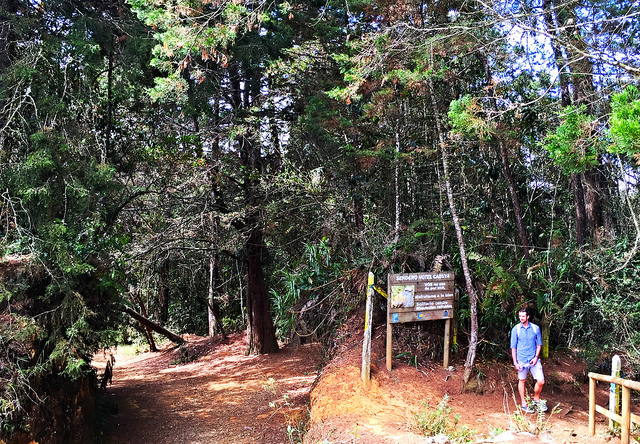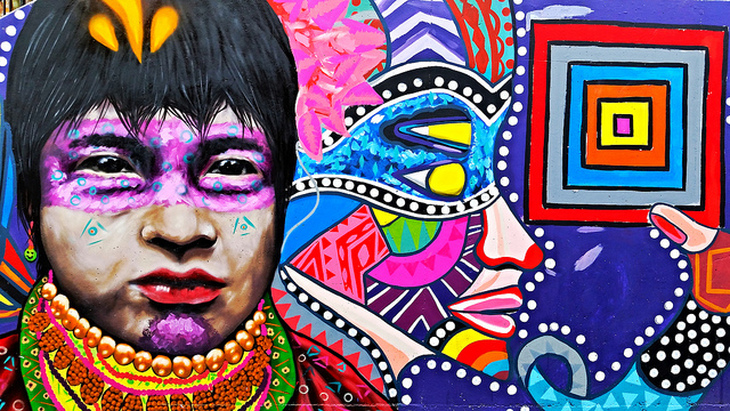|
The in-seat monitors are streaming code that reads “Caution: Extreme Danger” as if we’ve somehow been transported back to 1991, precipitating a journey to the world’s most dangerous city. But it’s not 1991 and our flight to Medellin is only slightly delayed by the electrical failure that keeps our Boeing A320 grounded for twenty concerning minutes. And almost as soon as we’re airborne, we’re ready to land, setting down in Colombia’s capital of the “new.” A midday taxi ride to our guesthouse in the trendy El Poblado neighborhood takes us through Medellin’s city center, filled with small shops, restaurants, and prostitutes. Much of the rest of the city feels like it too, is “developing,” but not El Poblado. El Poblado is as developed as any chic neighborhood in San Francisco, Portland, or Denver. Boutiques, artisanal coffee shops, brew pubs, and international restaurants carve out spaces along the tree-lined streets. On the weekends, the neighborhood is overtaken by party-goers. We make our way to an Atletico Nacional futbol game in the stadium Pablo Escobar helped build and mistakenly enjoy non-alcoholic beer (because, we’re told, if they serve alcohol, the fans will kill each other) while watching Colombianos wave banners, sing songs, and cheer non-stop, 45 minutes at a time. It’s truly a once in a lifetime experience and an exciting welcome to South America. A day later and two hours east, La Piedra (the stone), near Guatape, blows our mind. The peak of this massive rock is 2,135 meters (7,005 feet) above sea level, rising out of an explansive island landscape. We climb the 650 stairs to the top and drink the best micheladas we’ve ever had. Later during our time in Medellin, we ascend the city’s surrounding mountains via the Metro Cable, a public transit system opened in 2004 to provide access for the city’s most remote neighborhoods. From the Acevedo metro stop, we climb in the enclosed gondola lift and ride to Santo Domingo, then switch stations to make the final stretch all the way to Parque Arvi. Up and over the incredible mountains that enclose this valley city, the trip to the park makes for a beautiful, if slightly terrifying (fear of heights, anyone?!), adventure. We’re headed west. To the San Javier district and Comuna Trece, where Medellin’s dark history is slowly eroding through hopeful rebuilding efforts. Colorful homes scale the mountainside, painting a beautiful backdrop for Los Escalares, 385 meters of escalators built to connect what used to be Medellin’s most dangerous neighborhood with the rest of the city. In the literal sense, these escalators have given this community better access to the rest of the city, turning a 30 minute walk up steep stairways into a 6 minute ride. Symbolically, they are a beacon of hope and promise. The city’s desire to bring communities together and instill a sense of optimism and ownership in its residents. Moments after the slow ride down the escalators, while drinking beers in a San Javier park, we’re swarmed by a group of local schoolchildren. They leave the nearby swings and playground benches to inquire about us, these strange foreigners from the United States. We’re peppered with questions in Spanish - “Do you speak Spanish?” “Where are you from?” “How long are you here?” “Do you sing?” “Do you dance?” - and we marvel at their openness and interest in others. We try to keep pace with them, but our spanish isn’t good enough. Instead, we take it one word at a time, laughing together as the kids crack jokes we mostly don’t understand. A truly memorable twist to a simple experience.
Medellin is a mixed bag of new projects, change, and optimism, underlaid with cautionary tales of its violent past. But because each experience here feels so hopeful, it’s impossible to imagine anything but a positive future for the city and its people.
0 Comments
Your comment will be posted after it is approved.
Leave a Reply. |
Cohica TravelA travel design agency. Categories
All
Archives
October 2023
Follow us on Instagram @CohicaTravel
|

















 RSS Feed
RSS Feed
